Review: A food odyssey through Louisiana
Natasha Langan eats her way through the southern state of Louisiana, sampling everything from po' boys to gumbo
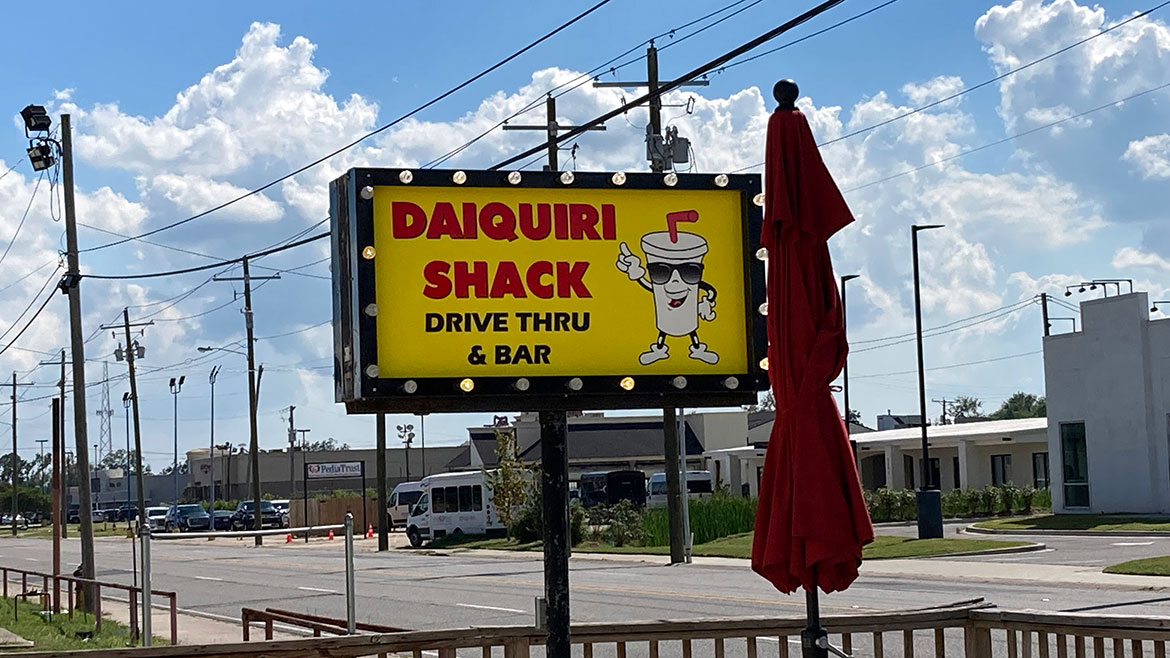
Ask anyone in Louisiana who makes the best gumbo and the answer will be “my momma”. “Gumbo” derives from the West African word for the okra that was brought to Louisiana by the early enslaved people and used to thicken the soup.
Its culinary origins reflect French, Spanish, Acadian (early French settlers from Canada), Native American and African influences, making it possibly the food most representative of the US as a whole. But it’s not all you’ll eat on a tour of the state.
Jambalaya, beignets, étouffée, po’ boys, boudin and, of course, crawfish (crayfish) are all unmissable treats – more on these later. The history of a place can be traced through its food and nowhere is this more true than in Louisiana.
MoneyWeek
Subscribe to MoneyWeek today and get your first six magazine issues absolutely FREE

Sign up to Money Morning
Don't miss the latest investment and personal finances news, market analysis, plus money-saving tips with our free twice-daily newsletter
Don't miss the latest investment and personal finances news, market analysis, plus money-saving tips with our free twice-daily newsletter
Starting in New Orleans, we stayed in the increasingly popular Lower Garden District in the Hotel Saint Vincent, a 19th-century building in an area full of oak-lined streets and classic Greek Revival and Italianate mansions with wrought-iron balconies.
A visit to the French Quarter is also a must. It is New Orleans’ most famous and earliest neighbourhood, with its grand cathedral and warren of historic streets overflowing with lush plants.
Guide David Higgins leads a two-hour wild ride through the history of the city, taking in the original Native American population, its founding by Jean Baptiste Le Moyne de Bienville in 1718 for the French Crown, its ceding to the Spanish, the voodoo queen Marie Laveau, Tennessee Williams and, of course, the music and culture that has arisen from the melange.
The tour is hyperbolic lunacy, a tsunami of information almost too unbelievable to be true, from tales of pirates to “Joanie on the Pony” (a gaudy gold statue of Joan of Arc). It was the most fun I’ve had in years and a reflection of the locals’ unbridled spirit.
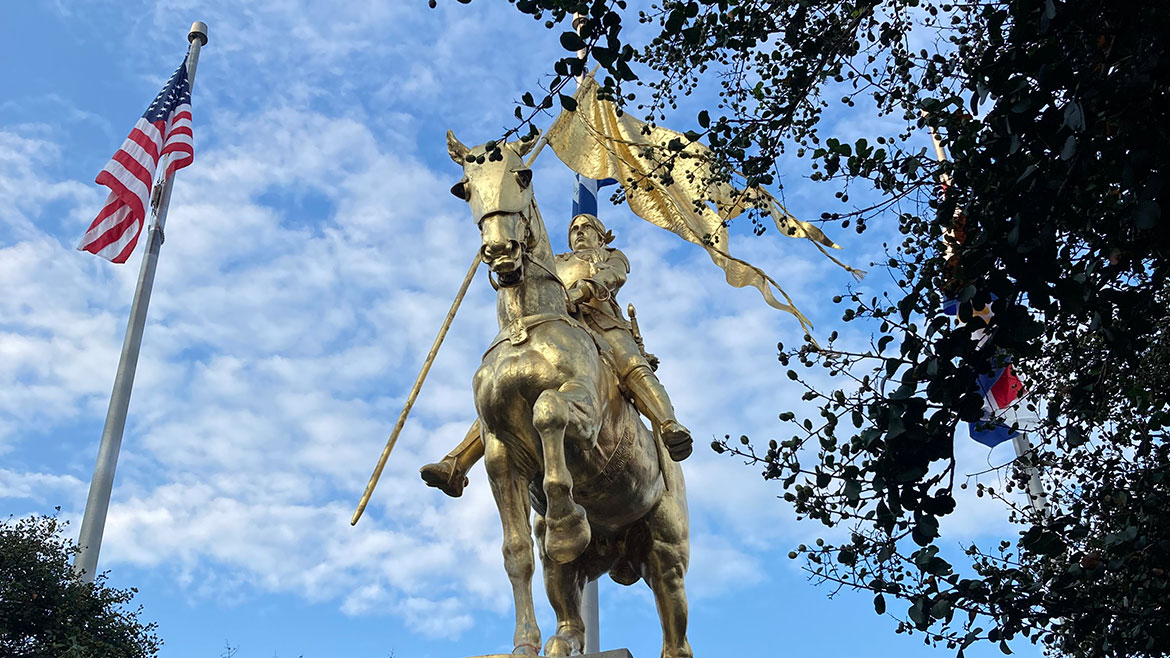
The gaudy golden statue Joanie on the Pony
But we were here for the food for which New Orleans is famous. Start the day with some beignets, little squares of feather-light doughnuts. Café du Monde, in the French Quarter, near the cathedral, is the most famous place to eat them.
But if you can’t face the queues, opt for Criollo Restaurant at Hotel Monteleone – once s favourite hangout of Ernest Hemingway, William Faulkner and Truman Capote, with its ornate revolving bar, like a gilded merry-go-round for grown-ups.
Their beignets are served with praline sauce and fresh strawberries along with the traditional avalanche of powdered sugar. I also tried the delicious fried green tomatoes and the Cajun omelette with crawfish, andouille sausage, peppers and cheese – a breakfast best left to the very hungry.
Luckily, the walking tour gave us an appetite for lunch. Napoleon House is a dark wood-clad bar and restaurant with a courtyard, serving traditional New Orleans food since 1914. We had Italian muffuletta, a huge, Italian-inspired sandwich stuffed with cured meats and cheese in a sesame crusted light loaf.
We also ate red beans and rice, a Louisiana dish traditionally eaten on a Monday, when a big pot could be left to bubble while everyone got on with laundry day after the weekend festivities. And we had Creole jambalaya, made with chicken and the local spicy sausage, and gulf shrimp and fried catfish po’ boys.
Legend has it that these hearty sandwiches served in French loafs originated in 1929 during the streetcar strike, when the Martin Brothers French Market & Coffee stand started giving out free food to the striking workers (poor boys), hence the name.
They were made from the leftover loaves, filled with “debris”, the not entirely appetising name for the scrapings and gravy from the roast meat. These days, they are filled with everything from fried oysters to the delicious fried catfish with roasted garlic tartar sauce and salad, like a much superior fish-finger sandwich.
To drink, a Pimm’s Cup, inspired by the original owner’s travels in England and served in US portions.
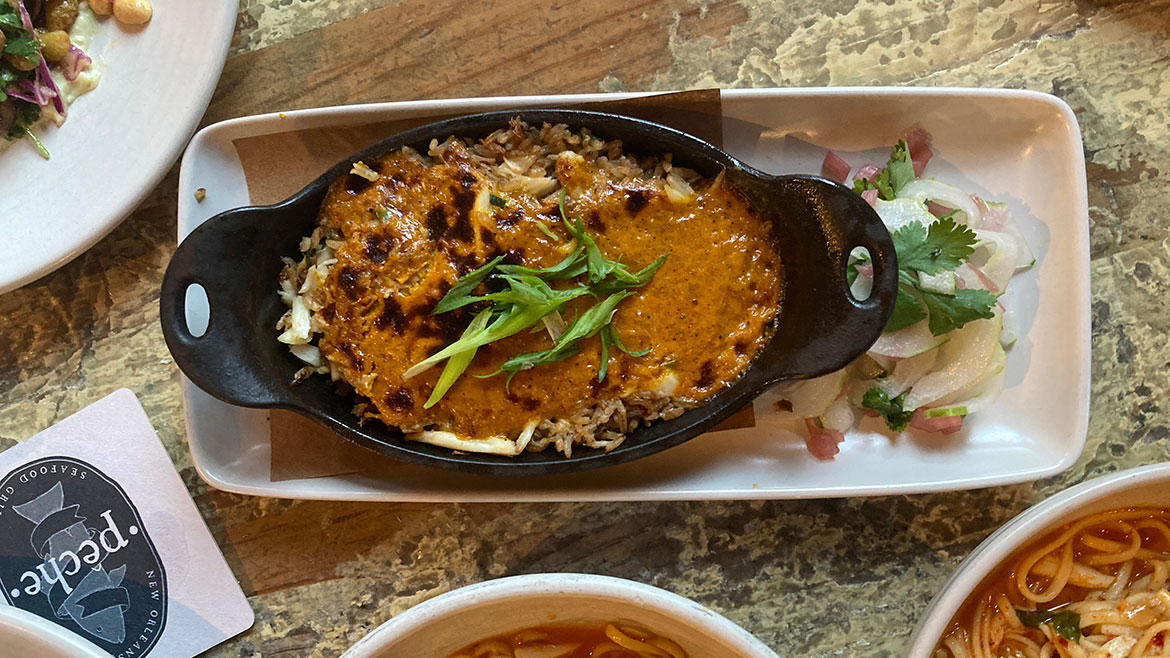
Pêche is a standout restaurant in the Warehouse District
A musical performance by the Preservation Hall All-Stars is a good way to end the night. Set up to preserve the local music scene, nightly shows are put on in a traditional theatre, where you’ll have a blast listening to classic New Orleans jazz. Of course, this being New Orleans, there were bands and musicians playing in the street throughout the French Quarter.
Next up was Baton Rouge, the state capital. We stopped at the Red Stick Spice Co for a cooking class with it’s founder, chef Anne Milneck. She taught us, with a great deal of patience, to cook crawfish étouffée, a Louisiana classic where crawfish are smothered in a thick, spicy sauce.
To make the sauce, start with the Louisiana “holy trinity” of onions, peppers and celery, then thicken with a roux, adding Cajun spices, garlic and stock before the crawfish tails go in to cook gently. When ready, serve over steamed rice. We also made a maque choux, made with fresh corn, and a rich gâteau de sirop, a cake made with the local pecans.
An American obsession
While in Baton Rouge, we visited the Louisiana State University and took a tour of the American football stadium, home to the LSU Tigers. It’s hard to overstate the importance of “college football” in the US. With typical southern charm, our guides put up with my idiotic questions about the sport.
We missed game day, but by all accounts the surrounding area becomes full of “tailgate parties”, where families and friends set up from the boots of their enormous cars tents and chairs, barbecues and coolers overflowing with drinks.
The Chimes is a Baton Rouge institution serving Louisiana Cajun and Creole specials. Crawfish featured heavily on the menu, including crawfish fries, crawfish mac ‘n’ cheese and shrimp and grits.
We also had sautéed crab fingers swimming in garlic butter, and spinach and artichoke dip, a delicious but artery-clogging dish filled with cream and cheese, accompanied by farfalle pasta that was coated in cornmeal and deep fried. Fried pasta really shouldn’t be allowed, but it was so wrong it was right and weirdly moreish.
On the way to the city of Lafayette we drove through the Atchafalaya Basin, the nation’s largest wetlands covering almost one-million acres of swamps, rivers, bayous and lakes stretching to the Gulf of Mexico.
It’s a haven for biodiversity with 65 species of reptiles and amphibians including the ever-present alligators, otters, beavers, black bears and over 250 species birds, including the largest nesting concentration of bald eagles in the south central US. Here, you also find the native crawfish that feature in the local cuisine to the point of obsession.
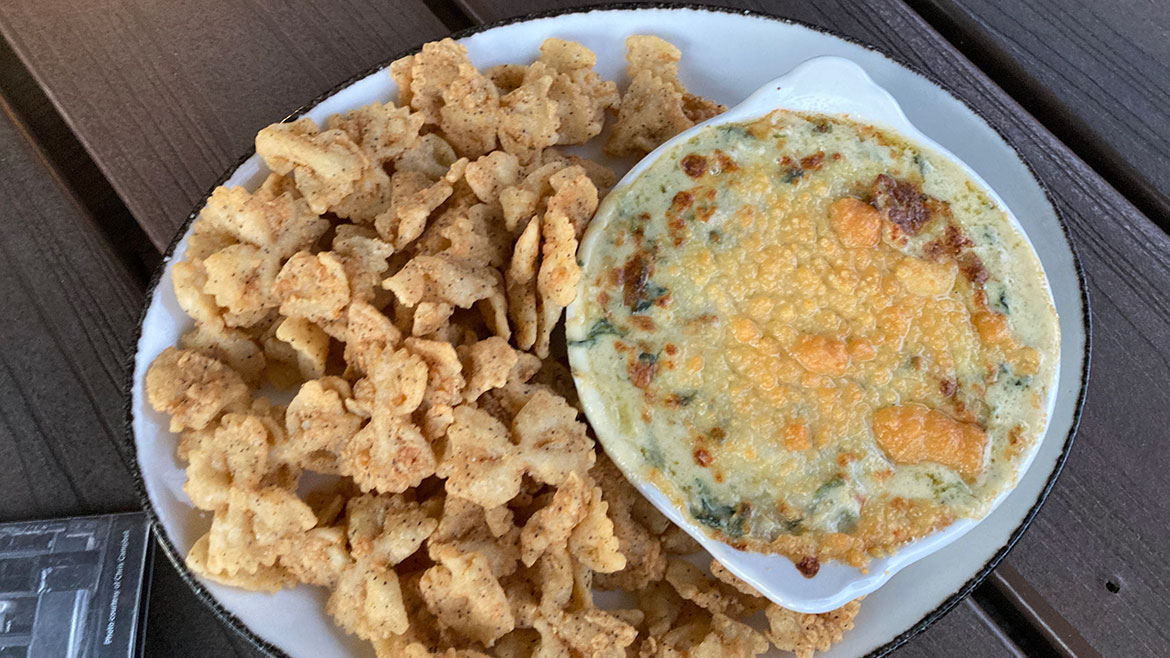
Fried pasta shouldn't be allowed but it is moreish
We took a tour on an airboat with McGee’s, which is the best way to explore the area. This vast landscape was filled with the ghostly stumps of swamp oaks, harvested for centuries along with the Spanish moss that was originally used as building insulation.
We didn’t spot any bald eagles, but we did see plenty of alligators and other birds, including herons and spectacular flocks of pink-plumed roseate spoonbills.
Lafayette is a historic town and the heart of Cajun and Creole country. It has a thriving food culture, traditional Acadian homes and a love of zydeco music, which blends French and Caribbean musical influences with the blues, accompanied by a washboard and accordion.
We had lunch at Johnson’s Boucaniere. Family run since 1937, the boudin sausages here are made to the traditional family recipe and the cuts of meat are smoked on site, served with traditional “fixins’”. I enjoyed a moist, smoked brisket, which had hints of the ubiquitous Cajun spice rub and smoke.
A whistle-stop food tour of downtown
The downtown restaurants are anything but hidebound by tradition. Spoonbill Watering Hole is a converted classic Americana petrol station serving southern food with Mexican twists. The gulf royal reds shrimp with zingy spicing and fresh herbs stood out.
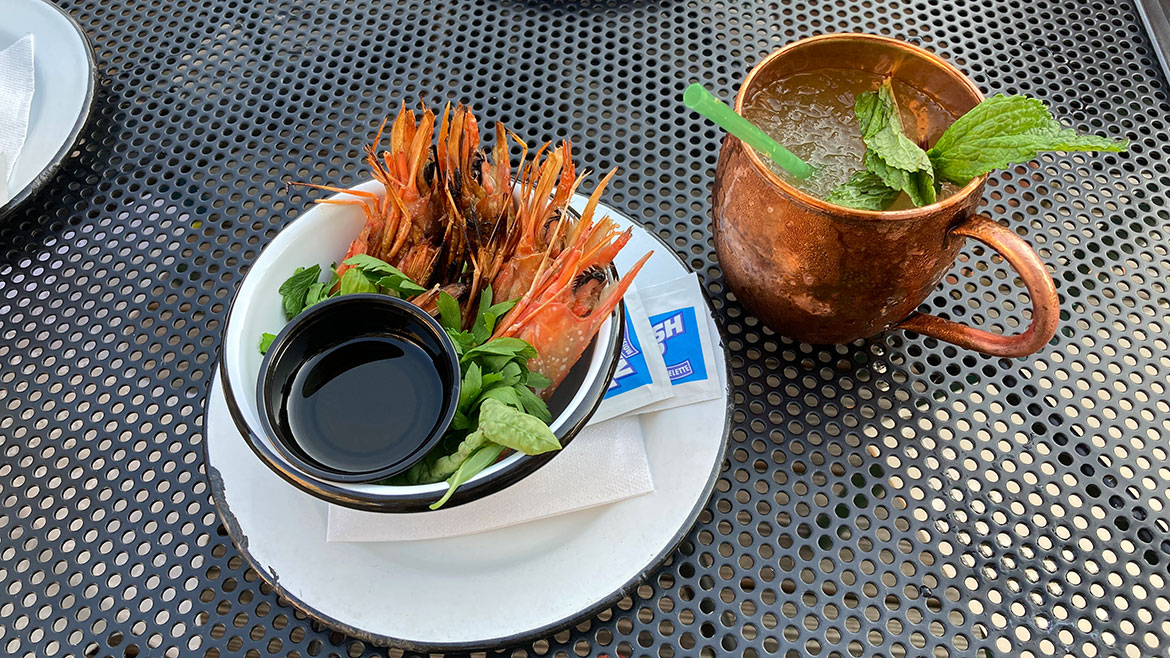
Gulf royal reds shrimp were zingy and spicy
There’s an excellent Spanish tapas restaurant, called Pamplona; another, Tsunami, for sushi, and Vestal for contemporary southern food, all within five minutes of each other.
Another must-visit is Borden’s Ice Cream Shoppe – a wonderful piece of Americana, serving a fantastic array of ice creams and sundaes with every topping available since 1940.
The next day, we took a Cajun whistle-stop food tour of traditional eateries. We started with a chicken and smoked sausage gumbo from Tons, the closest you can get to a home-cooked version.
Next up was the crawfish cornbread smothered in crawfish étouffée from Parish Biscuit Co – perfectly moist and studded with green chillies. Then, there was boudin from Nunu’s.
We stopped for some chargrilled oysters at Fezzo’s and finished with Mardi Gras king cake at Poupart Bakery, which is a legendary bakery set up in 1965 by a French pastry chef, who still puts in a daily appearance.
The cake itself is a sweet brioche covered in purple, green and gold-dyed sugar and filled with cream cheese. A version of it is eaten in Catholic countries over Christmas, but Louisianans like to eat it up to Mardi Gras.
Stuffed to the gills, we headed for Lake Charles, southwest Louisiana’s answer to Las Vegas with its glitzy resorts and “drive-thru” daiquiri joints. We stayed at L’Auberge Casino Resort, a vast hotel with a lazy river swimming pool and casinos overlooking Lake Charles.
You can drive from Houston, Texas, to the resort in a couple of hours so it was full of partying Texans enjoying the opportunity to drink and gamble to excess since most gambling is illegal in Texas.
As much as it was fun trying our luck at gambling, it turned out we were hopeless at it. But there’s more to Lake Charles than partying (don’t tell the happy Texans).
There’s the Historic City Hall Arts & Cultural Centre and the annual Louisiana Food & Wine Festival, which is a great way to sample the best of Louisiana’s food and drink, is also held here.
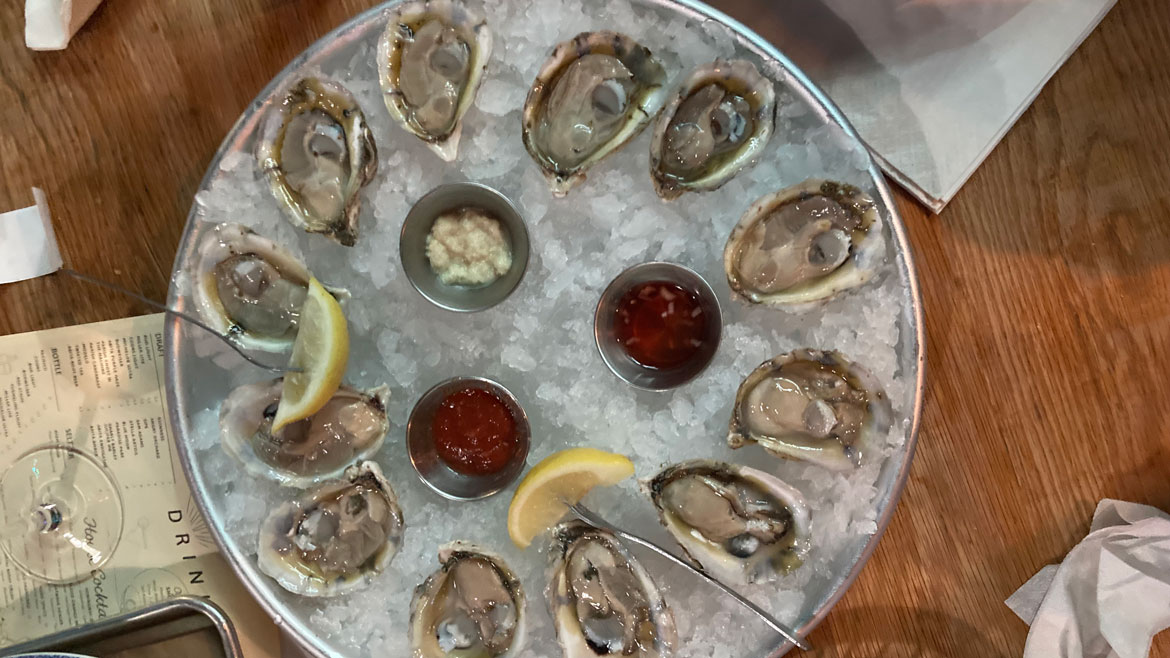
Fresh oysters – the perfect way to finish
By the time we went for our last meal at the Salt Revival Oyster Company, I was full to the brim, so it was a relief to eat sweet oysters, freshly shucked with nothing more than a squeeze of lemon and a dash of Tabasco.
The food had been delicious throughout, but also rich and spicy and full of butter and cream and cheese. Even the salad was basically an iceberg cut in half and filled with a lake of blue-cheese dressing with extra bacon and croutons. I was finally beaten and I could eat no more.
Natasha Langan was a guest of New Orleans & Co; Visit Baton Rouge; Lafayette Travel; and Visit Lake Charles. America As You Like It (0208 742 8299) has a ten-night holiday to New Orleans from £1,910 per person, including flights and car hire.
Get the latest financial news, insights and expert analysis from our award-winning MoneyWeek team, to help you understand what really matters when it comes to your finances.
Natasha read politics at Sussex University. She then spent a decade in social care, before completing a postgraduate course in Health Promotion at Brighton University. She went on to be a freelance health researcher and sexual health trainer for both the local council and Terrence Higgins Trust.
In 2000 Natasha began working as a freelance journalist for both the Daily Express and the Daily Mail; then as a freelance writer for MoneyWeek magazine when it was first set up, writing the property pages and the “Spending It” section. She eventually rose to become the magazine’s picture editor, although she continues to write the property pages and the occasional travel article.
-
 Autumn Budget tax changes: how is your generation affected?
Autumn Budget tax changes: how is your generation affected?The chancellor expects everyone to do their bit to boost the nation's finances but the tax burden is by no means shared equally
-
 Revealed: pension savers ditch investment trusts and favour passive funds
Revealed: pension savers ditch investment trusts and favour passive fundsDemand for investment trusts is cooling among self-invested personal pension (Sipp) customers, who are increasingly choosing money market funds, passive funds and individual shares
-
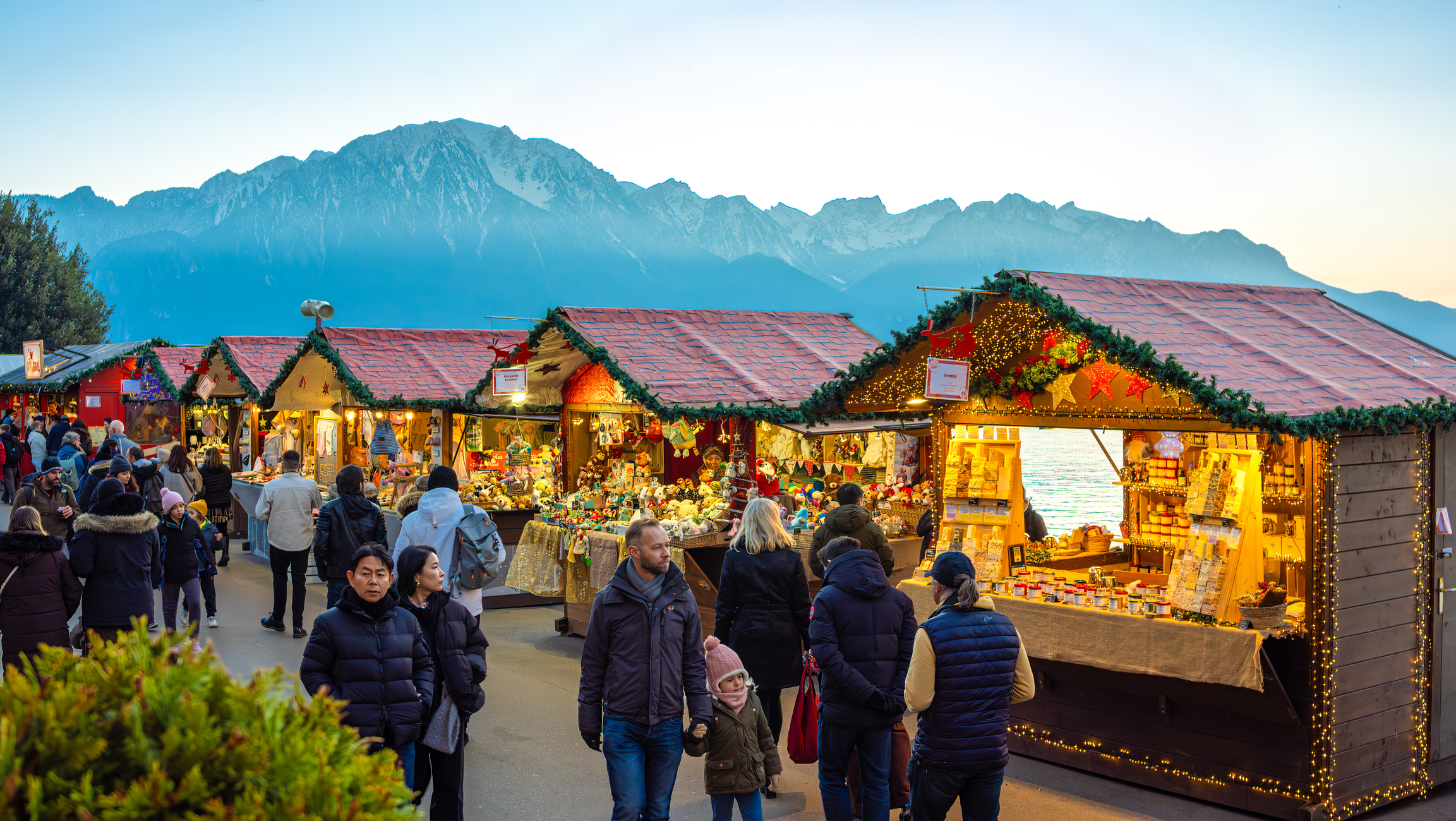 5 of the best Christmas markets in Europe to visit this winter
5 of the best Christmas markets in Europe to visit this winterWe round up the best Christmas markets in Europe for the perfect festive break – from Portugal to Switzerland
-
 Review: Villa d'Este – a Christmas spectacle on Lake Como
Review: Villa d'Este – a Christmas spectacle on Lake ComoTravel Villa d’Este, on the shores of Lake Como in Italy, is a magical place in which to celebrate the festive season
-
 Aircraft leasing companies can lift investors' portfolios
Aircraft leasing companies can lift investors' portfoliosThe aircraft leasing business is a safer way to cash in on air travel and its booming demand. David Prosser explains how it works and how to access it
-
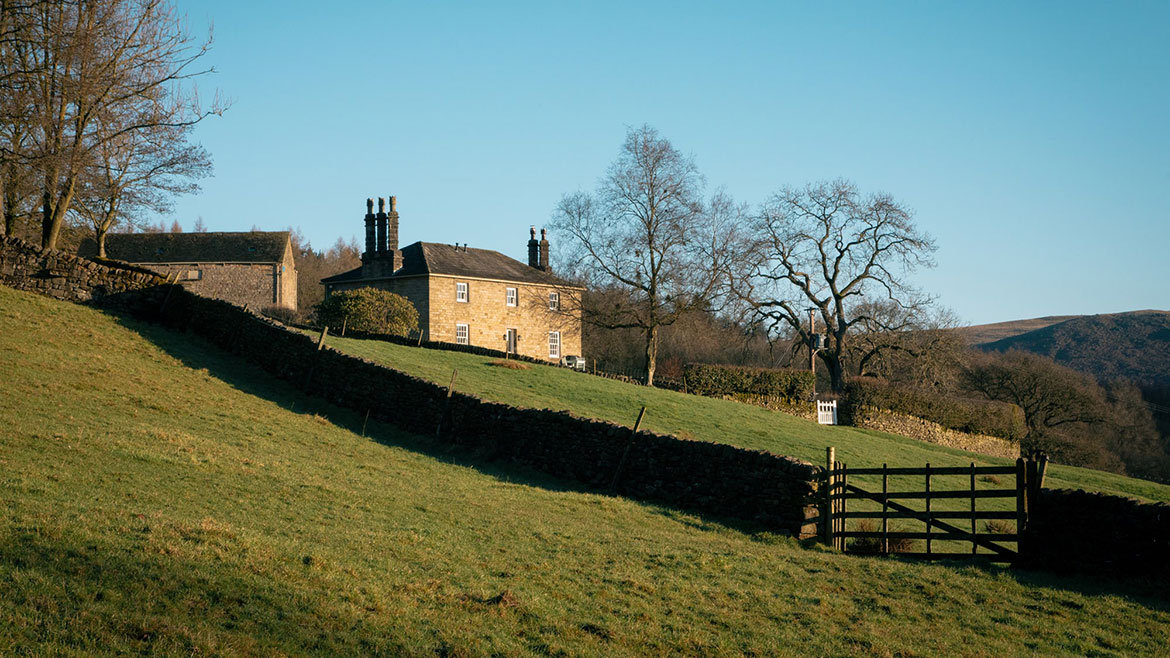 Review: Stank House Farm – a cosy cottage in Yorkshire
Review: Stank House Farm – a cosy cottage in YorkshireTravel Stank House Farm is a charming holiday cottage in North Yorkshire, close to Bolton Abbey and several wonderful walks
-
 Review: Relais & Châteaux – a world of wine and art in the Western Cape
Review: Relais & Châteaux – a world of wine and art in the Western CapeTravel Relais & Châteaux, the association of independent luxury hotels, offers a refined experience in Cape Town and Stellenbosch, in South Africa
-
 Review: Kuda Villingili Resort Maldives – a luxurious island retreat
Review: Kuda Villingili Resort Maldives – a luxurious island retreatTravel Kuda Villingili Resort Maldives in the North Malé Atoll in the Maldives is a haven offering a wealth of activities and fabulous food
-
 Review: Waldorf Astoria Dubai International Financial Centre – explore a city of Arabian delights
Review: Waldorf Astoria Dubai International Financial Centre – explore a city of Arabian delightsTravel The Waldorf Astoria Dubai International Financial Centre is a great base from which to set out on a foodie adventure of the emirate
-
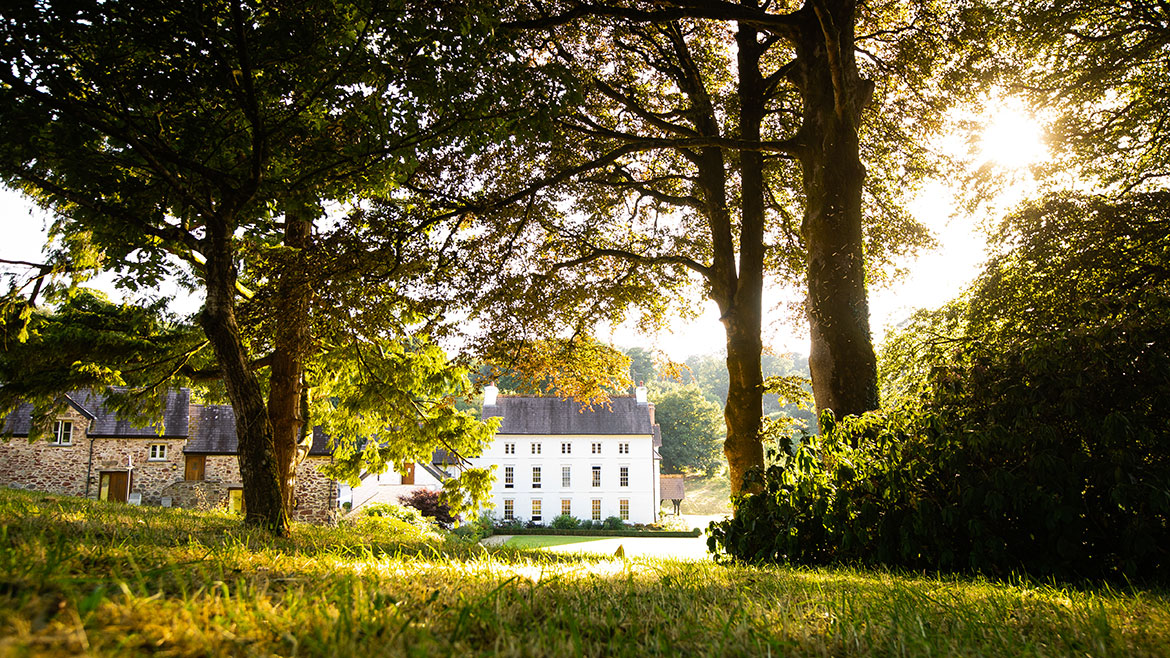 Review: Grove of Narberth – a warm welcome in Wales
Review: Grove of Narberth – a warm welcome in WalesTravel Grove of Narberth is a rustic and charming country retreat in Pembrokeshire all the year round